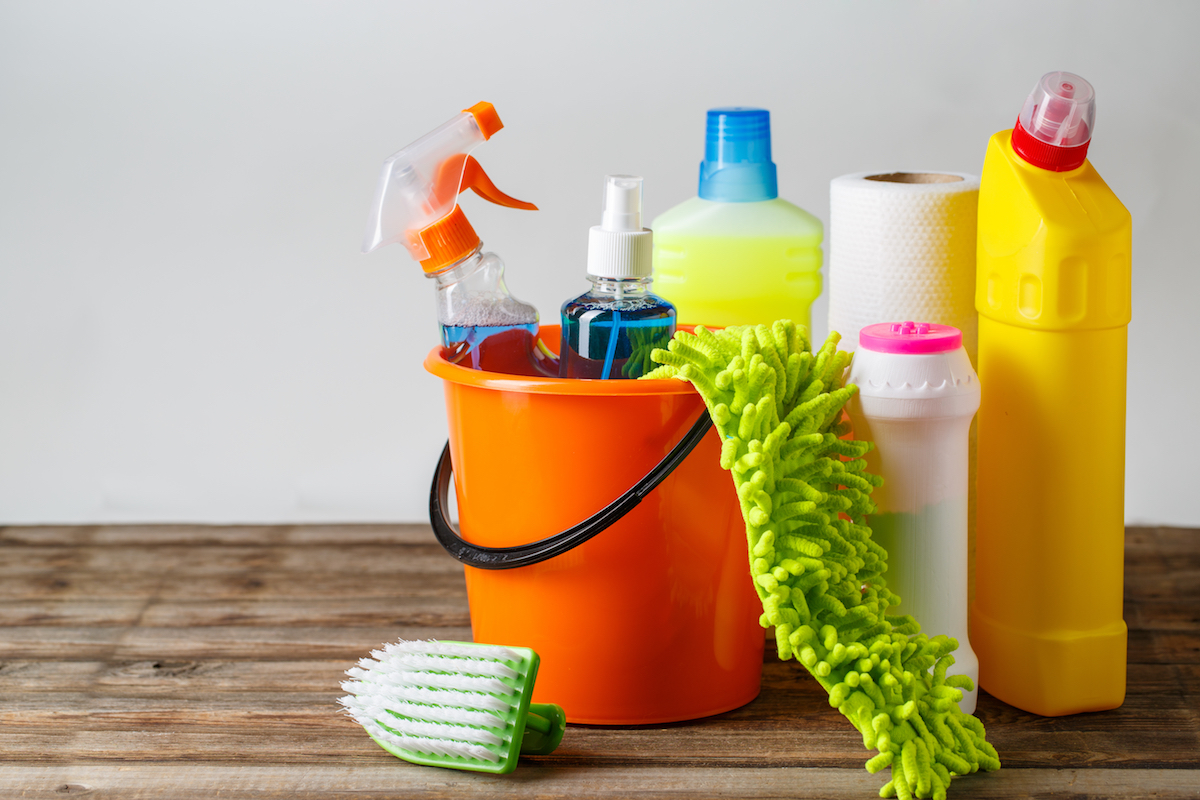
Their strong smell is the first clue that they may be affecting more than just your dirt and grime.
When you’re mopping your floors with that fresh-smelling, lemon-scented solvent, you’re technically cleaning — but, at the same time, you may be polluting the air inside your home. Common household products, from soaps and polishes to flooring and furniture, often contain chemicals that are released into the air and may be harmful to your health. Even those products marketed as “green” aren’t always off the hook.
No doubt you own one or more of the products that contain these chemicals, including chlorine bleach, aerosol sprays, detergents and dish soap, air fresheners, furniture and floor polish, oven cleaners, and rug and upholstery cleaners. Even the dry cleaning hanging in your closet or the new flooring you just installed may be a culprit.
What kinds of health issues can they cause?
Some household products release chemicals known as volatile organic compounds (VOC), which can lead to eye, nose and throat irritation, headaches and nausea, along with loss of coordination and damage to the liver, kidneys and central nervous system. Research has shown that levels of these compounds are often two to five times higher inside the home than outside.
Formaldehyde is one of the most notorious VOCs. This flammable, strong-smelling gas is found in many household products, personal cosmetics and dry-cleaning formulas, and other products can release it, too. Manufactured wood products, like laminate flooring, particleboard, cabinets and furniture, often have high amounts of formaldehyde, as do permanent-press fabrics, like those used on furniture or in draperies. Formaldehyde may cause a burning sensation in your eyes, nose or throat, watery eyes, coughing, wheezing, skin irritation or nausea.
There are also products and cleaning supplies that may complicate pre-existing health conditions, such as chronic obstructive pulmonary disease and asthma. It’s also important to be aware of products that may release dangerous chemicals, such as ammonia and bleach.
How can I stay safe and still use the products?
A few precautionary steps can go a long way in reducing your exposure to harmful fumes.
Manufacturers are not obligated by United States law to list all the ingredients in consumer products, but you can choose products that do not contain, or that have reduced amounts of, fragrances, irritants and flammable ingredients. It’s key to read all the labels on cleaning supplies and household products before you buy them, and follow directions for their use.
Good ventilation can help disperse harmful gases, so open the windows during and after cleaning. In general, it’s best not to use cleaning products in small, enclosed spaces.
When you buy pressed-wood furniture or cabinets, ask for exterior grade, which emits less formaldehyde. Also, wash permanent-press fabrics before using them, to release the formaldehyde, and if you buy new furniture or flooring, let it sit outside on a patio or in the garage until you no longer smell that telltale chemical odor.
Finally, seek out household and cleaning formulas that bear the Environmental Protection Agency’s (EPA) Safer Choice certification. This seal ensures that the EPA has reviewed every chemical ingredient in the formula (regardless of concentration) to ensure that it meets strict safety standards for both human health and the environment. Those standards include a restriction on VOC content, thus minimizing indoor air pollution — and improving your health.
Topics
